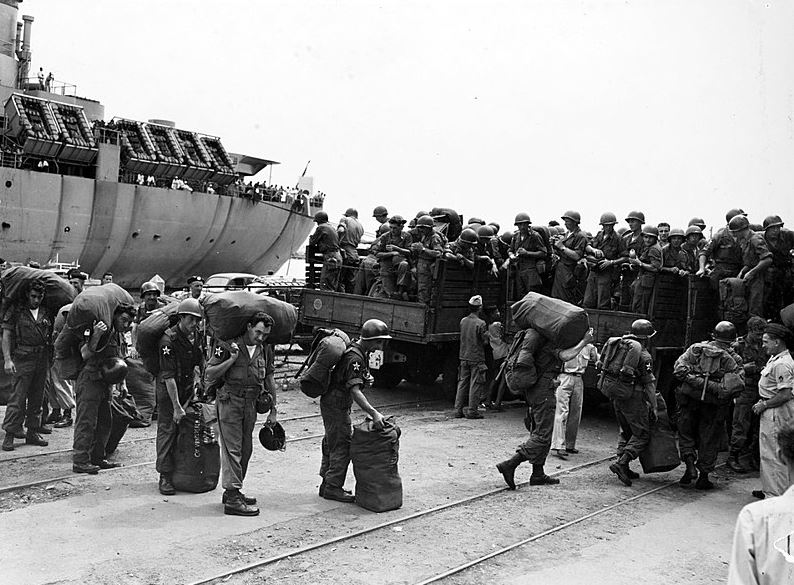In 1910, the Japanese Empire annexed Korea and tried to obliterate Korea as a nation and wipe out its history, culture, and language. With Japan’s fall in 1945 at the end of the Second World War, Korea gained independence after 35 years of being under Japanese control.
Following their liberation, it was agreed that the peninsula would be split into two occupation zones: South Korea (controlled by the U.S.) and North Korea (controlled by the Soviet Union). To separate the two countries and due to issues of “spheres of influence,” a momentary internal border was established in 1948, following the 38th parallel north, a circle of latitude nestling 38 degrees north of the planet’s equatorial plane.
With this, the country was divided into two: the Republic of Korea (South Korea) and the Democratic People’s Republic of Korea (North Korea). The South was led by its founding father and its first president Syngman Rhee. Meanwhile, the North was commanded by Kim Il-sung, its respective founder.
In 1948, the United States and the Soviet Union withdrew their troops from the peninsula. Yet, tensions never dwindled as both governments claimed to be the legitimate ruler of the entire country. Eventually, the situation heightened after a series of gunfire and raids from both sides. On June 25, 1950, troops from the North Korean Army crossed the temporary border and invaded South Korea.
The United Nations (UN) Security Council condemned the event and called on the members of the organization to help South Korea and bring troops behind the 38th parallel. Just two days later, the United States sent its forces and entered the Korean War to repel the invasion from North Korea. Other countries soon followed suit and sent their troops, including Canada, Australia, the Philippines, Turkey, Ethiopia, South Africa, Great Britain, Colombia, and France.
France’s Participation in the Korean War
France sent the French Battalion of the United Nations Organization to help in the Korean War. It was composed of volunteers from the country’s active and reserve military personnel.
General Clément Blanc, then-Chief of Staff of the French Army, decided to establish a volunteer force in response to the UN’s call. It was backed by Lieutenant General Raoul Magrin-Vernerey, the Inspector of the French Foreign Legion and a WW1 and WW2 Hero. At the age of 60 and on the brink of his retirement, Magrin-Vernerey, better known as Monclar, volunteered to be the commander of the new unit, and in line, accepting the demotion from the army corps general rank to lieutenant-colonel.
On November 29, 1950, a little more than five months after the war’s onset, the French Battalion set foot in Pusan, South Korea (today’s Busan). The troop was placed in the 23rd Infantry Regiment under the 2nd Infantry Division of the U.S. army.
While there were early fears that the French troops would be in wild confusion and disorder, the French Battalion proved to be gallant and were able to secure successful missions. Thus, gaining praise and respect from General Matthew Bunker Ridgway of the Eighth United States Army.
From January 7 to 12, 1951, the French force joined the Wonju Campaign and helped block the North Korean army from advancing further. They saw more action, particularly in Battle of the Twin Tunnels in Gyeonggi-do Province, South Korea, and the Battle of Chipyong-ni, also known as the Battle of Dipingli, both occurred in the first two weeks of February 1951, successfully resisting Chinese attacks and gaining opportunities for counter-offensive measures. These three battles were monumental for the UN Forces as they signaled many turning points in the war.
It was only the start as less than a month later, the French Battalion saw action in Hill 1037, nestling just 50 miles from Seoul. 200 of their men were wounded, while 40 were killed in the combat. On September 13, 1951, they joined the Battle of Heartbreak Ridge, or also known as the Battle of Wendengli in the hills of North Korea. It was a month-long, hard-fought battle where the American troops and the French Battalion eventually won.
France continued to lend support to South Korea until the signing of the Korean Armistice Agreement on 27 July 1953, which led to the complete cessation of all forms of hostilities and acts of armed force and rather resort to a peaceful settlement. France has sent nearly 3,500 soldiers, many of which are volunteers, throughout their participation in the war. The gallant French Battalion left Korea, with many accolades and medals, including silver stars.
Post-War Relations
France’s participation in the war helped solidify the French-Korean friendship and strengthen their cultural and economic linkages. While urbanization and industrialization brought massive changes in Korean cuisine, music, society, and way of living, nothing has changed in their relationship through the years.
Apart from bilateral cooperation, both countries also work together in different international organizations, such as UNESCO, OECD, and the United Nations. About North Korea, France is among the few countries in Europe that decided not to have formal diplomatic relations with the Democratic People’s Republic of Korea.
In 2002, nearly 6,000 French citizens were residing in South Korea, almost doubling the number of troops it sent in the war. In 2014, the number of Koreans in France was nearly 30,000, making the country the home of Western Europe’s third-biggest Korean diaspora, proving the excellent relationship between the two countries.
Economic links are as strong, with South Korean exports amounting to 4.1 billion Euros in 2006, with French exporting around 2.6 billion of goods in the same period. Many French companies operate in South Korea, with France also serving as South Korea’s seventh-largest investor. South Korea has an embassy in the romantic and beautiful Paris, while France has its embassy in the equally stunning Seoul.
In the early 2000s, South Korea built the “Path of the Living Memory,” which commemorates France’s significant contribution to the Korean War and aims to inform and transmit information about the interesting history of the French participation in the Korean War.


